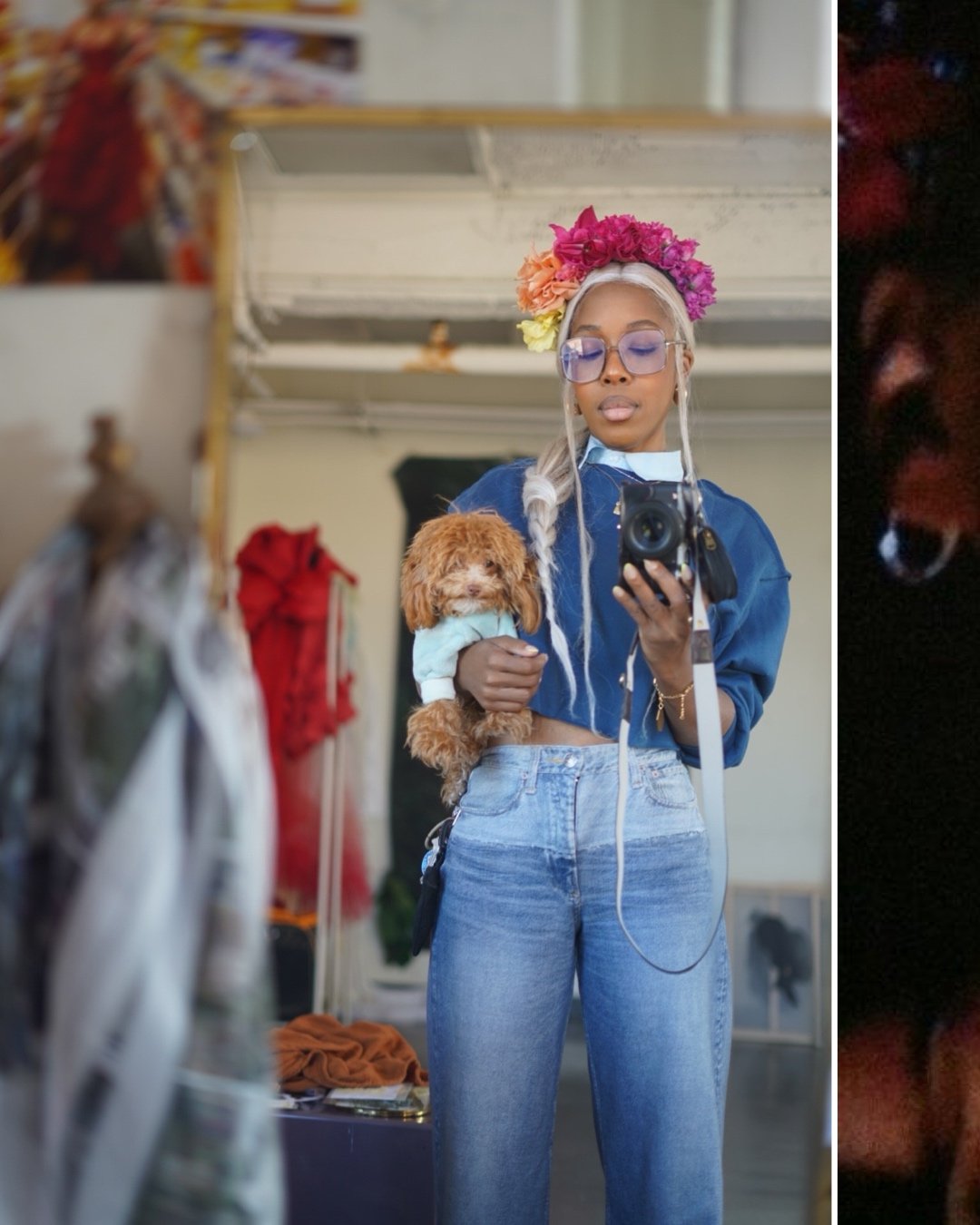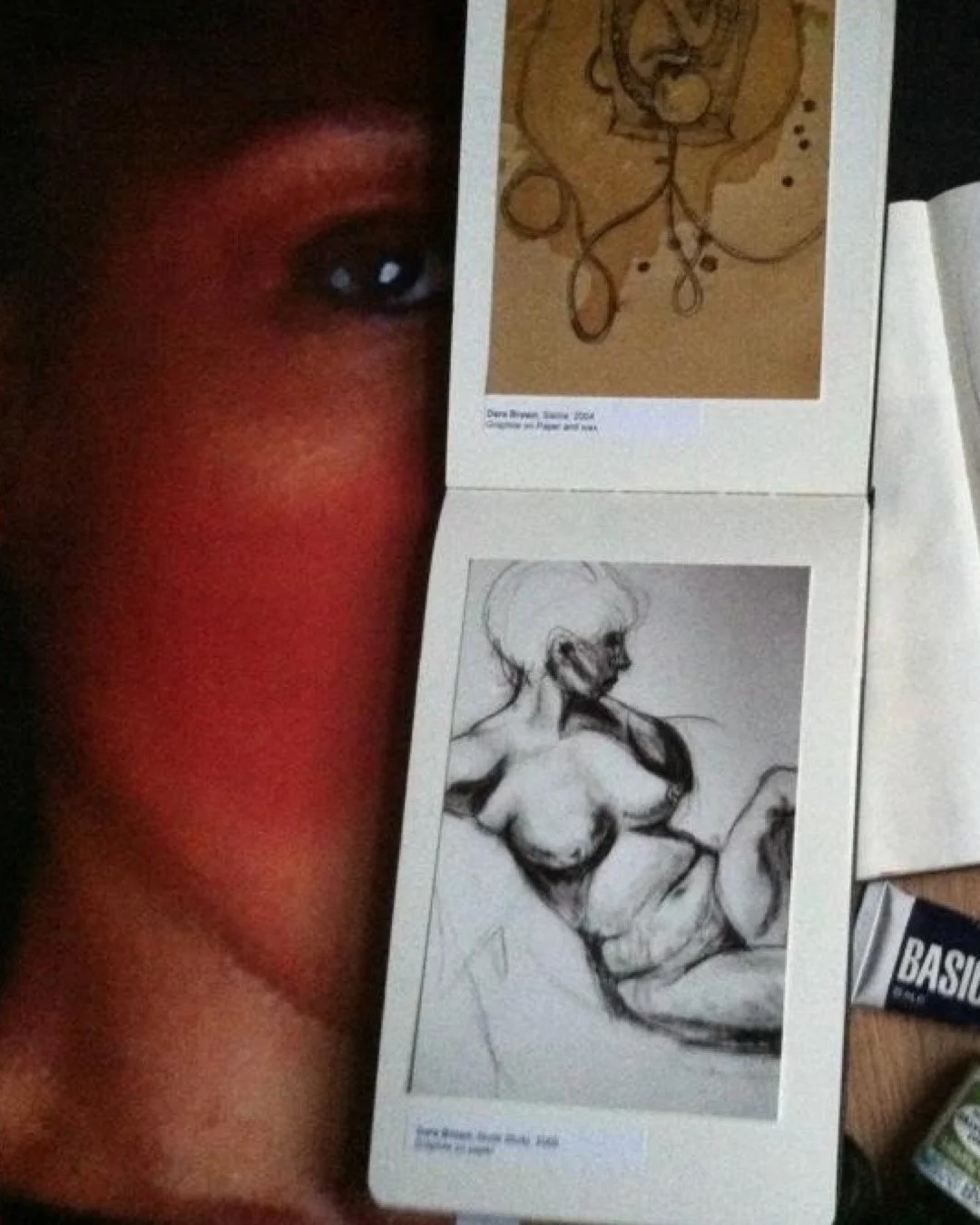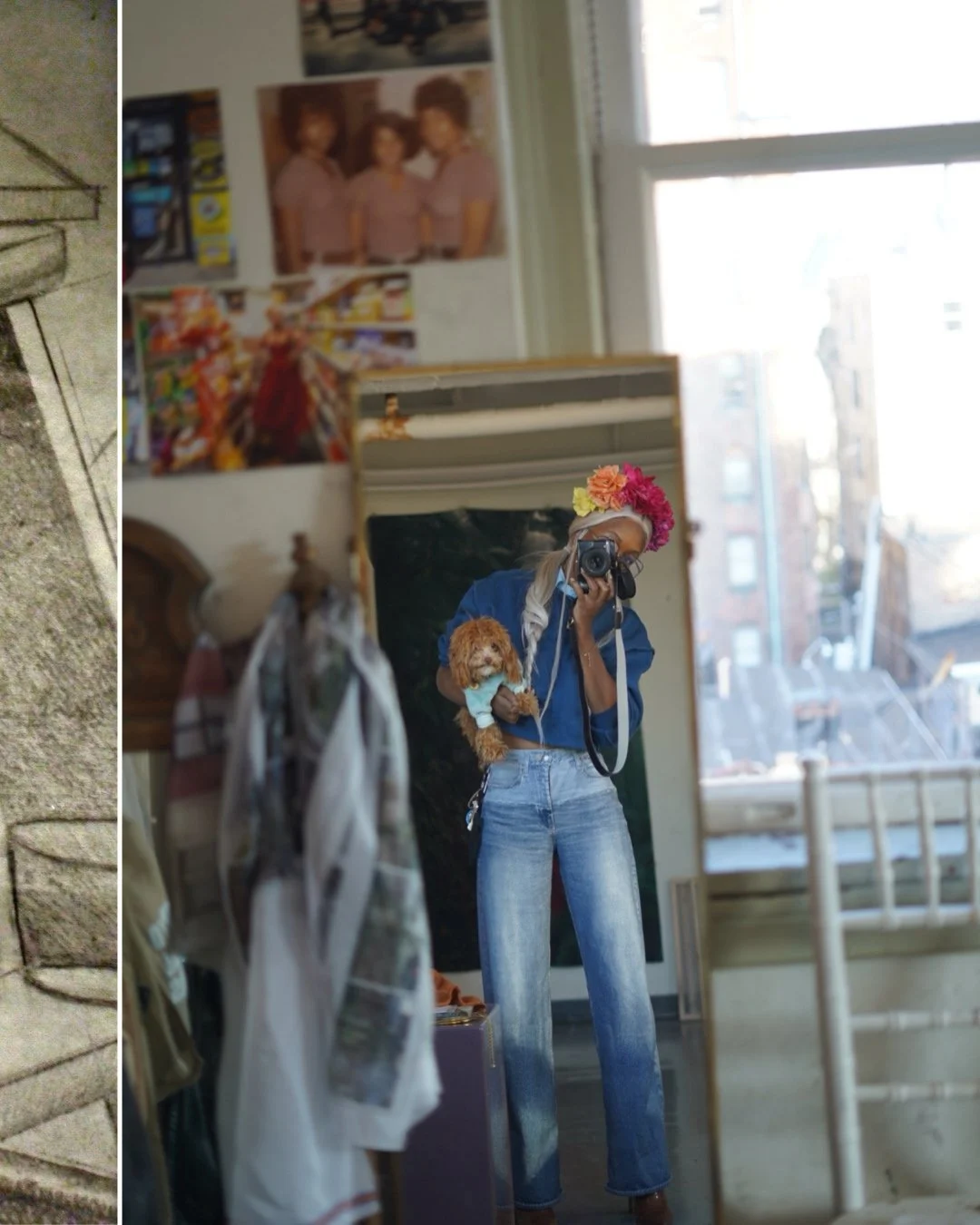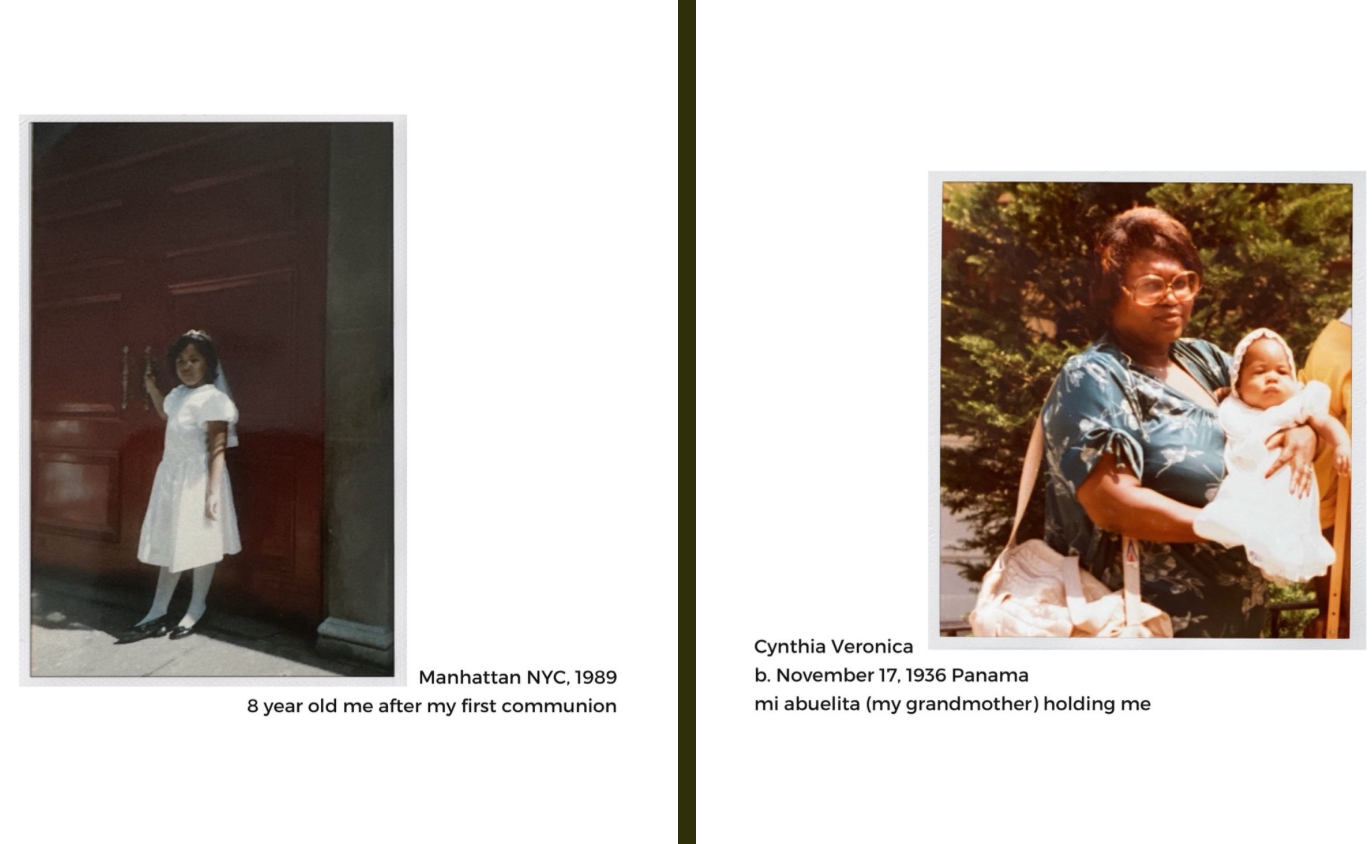




As a forever art school kid, my sketchbook has always been my diary.
Spending time in my studio with my high school sketches, paintings, and prints — as I experiment with media that I haven’t explored since art college freshman year. Excited to see how younger me informs my current art practice..
Washer Woman Was Here no.1, 2025
A glimpse of where it all began—back in June 2024, during my residency at MacDowell where I laid the first seeds of “Washer Woman Was Here.” This project is a living, breathing altar to hurricanes as goddesses: physical and spiritual forces—a tribute to the divine feminine energy that transforms, heals, and renews.
Here’s behind-the-scenes of my process—video footage from in my studio that are all shaping the vision for this future sculptural installation and performance. I can’t wait to bring this vision fully to life and return one day to the special place where it all started, to make more magic. For now, I’m just as excited about the journey.
As Baltimore School for the Arts Artist-in-Residence my sketchbook became my healing diary. During my archival process, I remind myself — That healing is not linear. There is strength in my soft vulnerability. When I share my journey I feel connected to others. Stay open to receiving love and support in the same ways that I give. This project is ongoing and will inform new artworks. For now, this series is simply the space for me to give voice back to the little girl who was silenced.
Untitled (Redacted Child), 2024
Untitled (Washer Woman Was Here) no.1-3, 2024
During my time as an artist-in-residence at MacDowell, I began researching hurricanes, not only as a rapidly rotating storm system but also the significance as a spiritual phenomenon. I am documenting my — research process, art-making practice in studio, and investigations using plant medicine.
If you were to ask me ‘what is a hurricane?” I would say, “for my people (of the West Indies) a hurricane is a goddess. — indeed, an angry goddess”. I am imagining The Washer Woman as the physical embodiment of cleansing deep wounds with the sustained force of a tropical cyclone.
after my first communion we went to the bodega (series), 2024
Growing up, I went to catholic school in Manhattan. I learned about rituals there. I danced in pews. I skipped down gothic-arched-lined halls. Little me played in all the golden gilded spaces. Little me spent so much time there. I wasn’t able to touch the altars; access reserved for priests and altar boys. I was only allowed to admire those spiritual spaces from a distance. So I began to create my own altars, using objects that I cherished and loved, just like *mi abuelita (my grandmother) taught me. [*Cynthia Veronica b. November 17, 1936 Panama]
MATERIALS: foam trays, plastic wrap, vegan leather glove, gold enamel catholic medallions, glass bottles with metal lids, eucalyptus oil, sorrel tea serum, communion wafers, communion cups, rosary beads, hair pick, comb, brush, plastic clips, gold hoop earrings, polaroids, astroturf. DIMENSIONS: 24 in x 24 in (installation)
my abuelo loves me en inglés and in spanish (series), 2024
Since I was little, I’ve always loved my mother’s handwriting. When I want to hold onto a memory, I ask mi mamá to write it down so that I can infuse her hand into the fibers of my artworks. Mi abuelo (my grandfather) Robinson Joseph Meade Jr, b 1932 in Panama, was the first man whose love for me was protective — one of the only men. Despite no longer being here in body, he still keeps me safe. I am creating artworks that serve as both an altar to communicate and to honor mi familia (my family) legacy.
MATERIALS: Ceramic Dinner Plate, Ink, Gel Medium, Enamel, DIMENSIONS: 8.5 in x 8.5 in
my first job was a lifeguard. I was trained to save others at fifteen. I learned how to care of myself in my forties (series), 2023-ongoing
Artworks from series were on exhibition in "Connected Diaspora: Central American Visuality in the Age of Social Media" at Bennington College Usdan Gallery. In collaboration with exhibition curator and artist Veronica Melendez, the exhibition casts light on a new generation of artists who visually reflect on U.S. Central American lives and experiences in the era of social media.







